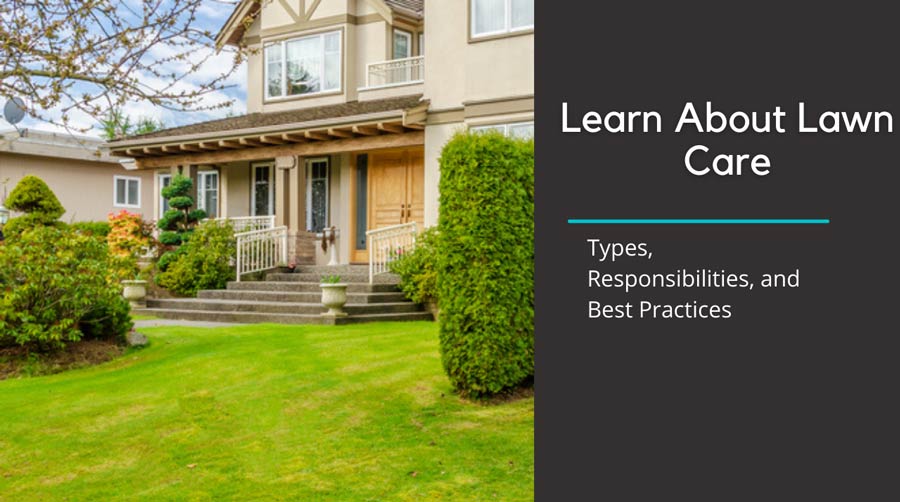
How To Have A Lush Green Yard Year Round
Now that we are coming out of Winter and entering Spring (with Summer hot on its heels, literally and figuratively... remember last year's 15 minutes of Spring?), it is time to be thinking green. As in green grass, but also as in money. Let me explain a bit.
It's a Yearly Thing
We tend to see every year after the rains let up dormant Bermuda grass and brown yards not being watered regularly. I've done it myself, turned off my lawn timers, then forgot to turn them back on. So, in this article, I will give some tips on both.
I took the image above from a video snippet of a property we recently began the repairs on for a new resident. The greener grass further away is the neighbor's yard. The closer grass is on a property a resident just moved out of. I mention this because, well, transparency, but further, I was at this site a few days earlier and noted that the neighbor's grass looked fantastic! I was also a little jealous that it looked so much better than ours. We did order seed and cover of our yard to get it to the same level.
The neighbor was brilliant and did precisely what we ask our landscapers to do, which is to add Rye seed just before Winter, mixed 50% with Tall Fescue. That gives a lovely green, lush yard every time. It's green in Winter via the Rye, and it's green in the heat with the Tall Fescue. Let's face it. There is nothing attractive about dormant Bermuda or St. Augustine grass.
It's About Home
When you rent or buy a home, it should be exactly that, a home. While you are renting a home, you are paying for it as if it were your own and should care for it the same way, as if it were yours. In a sense, it is. You celebrate holidays there. Birthdays. Graduations, all of life's events involve home. When you leave work, you tell your coworkers you are going home.
The yard is part of that home. It's the last thing you see when you leave for the day and the first thing you see when you arrive home. And, believe it or not, how that presents does psychologically impact you. Here is an article that backs that up.
Just like clutter in the home can (literally and figuratively) drive you mad, the environment you live in can, too, even if it's your yard. Now we're not suggesting adding a feng shui garden and such, but a nicely kept and tended yard will prove a balm against the rages of the world out there when you pull up to your home.
Food for thought...
Have you over noticed that neighborhoods with cars parked on dead yards tend to correlate with other destructive behaviors? They go hand in hand. I wrote a blog a few months back about how one property taking pride and sprucing up can result in other properties "keeping up with the Smiths." Folks, it starts with the front yard. Ever notice how a street can have house after house with beautiful lawns? That means that the Smiths have been there a while.
Food for Grass
Your lawn is a Carbon Dioxide Sequestering Machine. Your lawn breathes in carbon dioxide, mixes that with sunlight and water to grow, and in the process exhales oxygen. Let me tell you; dirt does none of this! Neither does rocks!
Check this out from the University of Minnesota
So, not only is your lawn good for your overall feeling of wellbeing if it is being kept up, but it is also good, overall, for the environment!
However, grass also needs nutrients. You need to feed it. No less than twice a year, you need to toss down some fertilizer. My Personal favorite is steer manure. Upside, it's cheap and effective, downside, it smells bad for a couple of days, and during that time, it draws flies. It also tends to have clover and some weed seeds in it.
Why do I like it then? Every time you mow your lawn, you are stripping away biomass. Much of that is sequestered (stored) carbon, but a fair amount of the clippings is nutrients the soil provided. I feel like adding back the lost biomass is a nice thing to do for my yard, I suppose. " You gave up yourself, land, to provide for my grass, here's a treat back," I think as I hum the Zippity Do Dah song.
How to Green it Up and What does that cost?
All valid questions, but first, let me point something out:
If you cut the water off to your sprinklers thinking you are saving money, I can tell you this: you are not saving anything near what you think you are. I have an average amount of grass at my house. As an experiment a few years ago, I cut my water off to see what I saved. I saved $10. Ten. Measly. Bucks.
Not only did I save almost nothing, but the following year I was dinged by the water district for wasteful usage because they use year-to-year comparisons to determine your use and rate. So that was like $20 more. Additionally, I killed my yard by cutting off my water; I had to replant my yard to the tune of nearly $200 in seed and soil. Granted, I experimented with a few different types of grass, and that's the only reason it was so much. I could have seeded with average seed and soil for about $50. In short, the experiment was not worth it. I will not do that again.
So, the cost:
A large bag of Tall Fescue mix is about $29, and that covers 1750 sq. ft for a new lawn. That's pretty cheap.
A bag of manure is under $2, and seriously, you are participating in recycling oddly. That same 1750 sq ft of the lawn should take about ten bags to fertilize to cover the seed. So, $20.
Spread the seed, cover with the steer leavings, tamp it down (I walk on it all), now what?
WATER IT! A lot of people mistakenly believe that you can only apply manure in cool seasons. That is partly true because the nitrates in the fertilizer will burn the surrounding grass when it is hot out if you don't do it right. It can burn the existing grass even when it is not so hot. What to do, what to do...
Well, first of all, those nitrates in the fertilizer are doing you no good at all sitting on the surface. You need those nitrates in the soil, stat, and require watering that new soil and seed heavily to wash it in. Not so much that it washes away, but just enough to get it to penetrate the underlying soil. The side benefits? The water will tone down the manure smell.
In about 10 days, you will notice the fertilizer rising and cracking. That is your new grass popping up, so say howdy!
The water cost
Over the first ten days, you must keep that manure moist, and that means you must water it twice a day. To be frank, you would have to do this with sod too. From there, until the grass matures over the coming weeks, you must water daily. Realistically, once you have the lawn established, you can slowly dial back the amount of water you throw, amount of time, but do keep it watering twice a day daily. The goal is to train the roots to run deep.
Long Term Care
So, now you've done all this work to plant a yard. By the way, the process of fertilizing with manure (or whatever you like to use) twice a year still holds true, but once I have established a yard, I usually drop some Weed & Feed twice a year. It keeps my yard green and kills off weeds and clovers. As I mentioned above, manure tends to have a little of each, so you will face these at some point.
How's That Water Doing?
I HIGHLY recommend testing your sprinkler system once every two weeks. I try to do mine weekly, but let's face it, shiny things exist in this work of ours.
By testing your sprinkler system manually for a minute per station, you're going to spot potential problems. Sprinkler shooting in the wrong direction and into the street? That is money lost; correct it! Valve not coming on, right? You will have a dead sector.
Honestly, I usually find at least one issue. Usually, it's a dribbling head. Do you know what that means? Debris has clogged the filter basket behind the head. Unscrew the nozzle, pluck out the filter basket, blow on it opposite of the water flow, put it back together, and (usually) presto.
Last word of advice
Each time you test run your sprinklers, look for leaks and sprinklers watering anything outside of what they should be watering. Watering the sidewalk or driveway is a waste of your money. A gorgeous, landscaped yard, whether xeriscaped or a lush green lawn, can bring a smile to your face, and that, my friends, is what it is all about.
Here's an article that will get you up to speed on Rental Property Yard Care: Types, Responsibilities, & Best Practices











